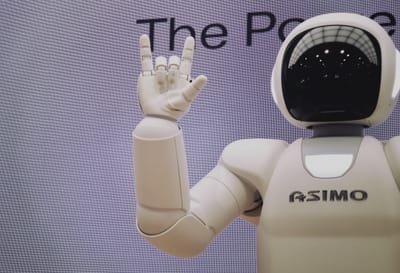JILL ROTTON
Greetings! I am completing my Master of Science in Instructional Technology through Grand Canyon University. I currently teach 7th Grade English-Language Arts and have for over 10 years. Within my digital portfolio, the six ISTE - C Standards are examined along with samples of my work demonstrating mastery for viewing.
Please enter your name and email address to keep current of any website changes or additions.
Standard 1
VISIONARY LEADERSHIP
Definition:
Technology Coaches inspire and participate in the development and implementation of a shared vision for the comprehensive integration of technology to promote excellence and support transformational change throughout the instructional environment.
Indicators:
a. Contribute to the development, communication, and implementation of a shared vision for the comprehensive use of technology to support a digital-age education for all students
b. Contribute to the planning, development, communication, implementation, and evaluation of technology-infused strategic plans at the district and school levels
c. Advocate for policies, procedures, programs, and funding strategies to support implementation of the shared vision represented in the school and district technology plans and guidelines
d. Implement strategies for initiating and sustaining technology innovations and manage the change process in schools and classrooms
Artifact:
Integrating Technology into Teaching Models
Rationale:
A digital presentation that instructs and guides educators when implementing a technology integration model simultaneously with their current teaching practices to include:
Definition:
Technology Coaches inspire and participate in the development and implementation of a shared vision for the comprehensive integration of technology to promote excellence and support transformational change throughout the instructional environment.
Indicators:
a. Contribute to the development, communication, and implementation of a shared vision for the comprehensive use of technology to support a digital-age education for all students
b. Contribute to the planning, development, communication, implementation, and evaluation of technology-infused strategic plans at the district and school levels
c. Advocate for policies, procedures, programs, and funding strategies to support implementation of the shared vision represented in the school and district technology plans and guidelines
d. Implement strategies for initiating and sustaining technology innovations and manage the change process in schools and classrooms
Artifact:
Integrating Technology into Teaching Models
Rationale:
A digital presentation that instructs and guides educators when implementing a technology integration model simultaneously with their current teaching practices to include:
- the value of using technology to its fullest potential rather than achieving the same results as old methods,
- how technology can be used to teach and learn in ways not possible 20 years ago,
- and ways in which multimedia help facilitate learning theory applications.

Standard 2
TEACHING, LEARNING, & ASSESSMENTS:
Definition:
Technology Coaches assist teachers in using technology effectively for assessing student learning, differentiating instruction, and providing rigorous, relevant, and engaging learning experiences for all students.
Indicators:
a. Coach teachers in and model design and implementation of technology-enhanced learning experiences addressing content standards and student technology standards
b. Coach teachers in and model design and implementation of technology-enhanced learning experiences using a variety of research-based, learner-centered instructional strategies and assessment tools to address the diverse needs and interests of all students
c. Coach teachers in and model engagement of students in local and global interdisciplinary units in which technology helps students assume professional roles, research real-world problems, collaborate with others, and produce products that are meaningful and useful to a wide audience
d. Coach teachers in and model design and implementation of technology-enhanced learning experiences emphasizing creativity, higher-order thinking skills and processes, and mental habits of mind (e.g., critical thinking, metacognition, and self-regulation)
e. Coach teachers in and model design and implementation of technology-enhanced learning experiences using differentiation, including adjusting content, process, product, and learning environment based upon student readiness levels, learning styles, interests, and personal goals
f. Coach teachers in and model incorporation of research-based best practices in instructional design when planning technology-enhanced learning experiences
g. Coach teachers in and model effective use of technology tools and resources to continuously assess student learning and technology literacy by applying a rich variety of formative and summative assessments aligned with content and student technology standards
h. Coach teachers in and model effective use of technology tools and resources to systematically collect and analyze student achievement data, interpret results, and communicate findings to improve instructional practice and maximize student learning
Artifacts:
Flipped Classroom Model
Flipping an English Lesson
Rationale:
A collection of informative and instructional videos demonstrating how to flip traditional classroom lessons to enhance the learning experience. Flipping lessons adjusts content to strengthen the learner-centered environment and supports 21st-century learning. This structure differentiates lessons for all types of learners and learning styles allowing for a more personalized approach to learning.
Definition:
Technology Coaches assist teachers in using technology effectively for assessing student learning, differentiating instruction, and providing rigorous, relevant, and engaging learning experiences for all students.
Indicators:
a. Coach teachers in and model design and implementation of technology-enhanced learning experiences addressing content standards and student technology standards
b. Coach teachers in and model design and implementation of technology-enhanced learning experiences using a variety of research-based, learner-centered instructional strategies and assessment tools to address the diverse needs and interests of all students
c. Coach teachers in and model engagement of students in local and global interdisciplinary units in which technology helps students assume professional roles, research real-world problems, collaborate with others, and produce products that are meaningful and useful to a wide audience
d. Coach teachers in and model design and implementation of technology-enhanced learning experiences emphasizing creativity, higher-order thinking skills and processes, and mental habits of mind (e.g., critical thinking, metacognition, and self-regulation)
e. Coach teachers in and model design and implementation of technology-enhanced learning experiences using differentiation, including adjusting content, process, product, and learning environment based upon student readiness levels, learning styles, interests, and personal goals
f. Coach teachers in and model incorporation of research-based best practices in instructional design when planning technology-enhanced learning experiences
g. Coach teachers in and model effective use of technology tools and resources to continuously assess student learning and technology literacy by applying a rich variety of formative and summative assessments aligned with content and student technology standards
h. Coach teachers in and model effective use of technology tools and resources to systematically collect and analyze student achievement data, interpret results, and communicate findings to improve instructional practice and maximize student learning
Artifacts:
Flipped Classroom Model
Flipping an English Lesson
Rationale:
A collection of informative and instructional videos demonstrating how to flip traditional classroom lessons to enhance the learning experience. Flipping lessons adjusts content to strengthen the learner-centered environment and supports 21st-century learning. This structure differentiates lessons for all types of learners and learning styles allowing for a more personalized approach to learning.

Standard 3
DIGITAL AGE LEARNING ENVIRONMENTS
Definition:
Technology coaches create and support effective digital age learning environments to maximize the learning of all students.
Indicators:
a. Model effective classroom management and collaborative learning strategies to maximize teacher and student use of digital tools and resources and access to technology-rich learning environments
b. Maintain and manage a variety of digital tools and resources for teacher and student use in technology-rich learning environments
c. Coach teachers in and model use of online and blended learning, digital content, and collaborative learning networks to support and extend student learning as well as expand opportunities and choices for online professional development for teachers and administrators
d. Select, evaluate, and facilitate the use of adaptive and assistive technologies to support student learning
e. Troubleshoot basic software, hardware, and connectivity problems common in digital learning environments
f. Collaborate with teachers and administrators to select and evaluate digital tools and resources that enhance teaching and learning and are compatible with the school technology infrastructure
g. Use digital communication and collaboration tools to communicate locally and globally with students, parents, peers, and the larger community
Artifact:
Web-Based Environments Digital Presentation
Rationale:
This presentation supports teachers by explaining how various web-based environments can assist and elevate the teaching and learning experience by identifying and evaluating the following components for classroom application:
Definition:
Technology coaches create and support effective digital age learning environments to maximize the learning of all students.
Indicators:
a. Model effective classroom management and collaborative learning strategies to maximize teacher and student use of digital tools and resources and access to technology-rich learning environments
b. Maintain and manage a variety of digital tools and resources for teacher and student use in technology-rich learning environments
c. Coach teachers in and model use of online and blended learning, digital content, and collaborative learning networks to support and extend student learning as well as expand opportunities and choices for online professional development for teachers and administrators
d. Select, evaluate, and facilitate the use of adaptive and assistive technologies to support student learning
e. Troubleshoot basic software, hardware, and connectivity problems common in digital learning environments
f. Collaborate with teachers and administrators to select and evaluate digital tools and resources that enhance teaching and learning and are compatible with the school technology infrastructure
g. Use digital communication and collaboration tools to communicate locally and globally with students, parents, peers, and the larger community
Artifact:
Web-Based Environments Digital Presentation
Rationale:
This presentation supports teachers by explaining how various web-based environments can assist and elevate the teaching and learning experience by identifying and evaluating the following components for classroom application:
- Learning management systems
- Free or low-cost website creation tools
- Web 2.0 tools
- Emerging web-based environments
- Online inquiry-based learning tools/environments
- Online training environments
- Educational benefits, limitations, drawbacks, cost & preparation demands, integration attempts, and examples & reviews

Standard 4
PROFESSIONAL DEVELOPMENT & PROGRAM EVALUATION
Definition:
Technology coaches conduct needs assessments, develop technology-related professional learning programs, and evaluate the impact on instructional practice and student learning.
Indicators:
a. Conduct needs assessments to inform the content and delivery of technology-related professional learning programs that result in a positive impact on student learning
b. Design, develop, and implement technology-rich professional learning programs that model principles of adult learning and promote digital age best practices in teaching, learning, and assessment
c. Evaluate results of professional learning programs to determine the effectiveness on deepening teacher content knowledge, improving teacher pedagogical skills and/or increasing student learning
Artifact:
Professional Learning Implementation Plan
Rationale:
Technology Coaches assist teachers in using technology effectively for assessing student learning, differentiating instruction, and providing rigorous, relevant, and engaging learning experiences for all students. This implementation plan contains professional development over the course of one year to provide technology-rich learning programs to create more effective teachers and teaching practices.
Definition:
Technology coaches conduct needs assessments, develop technology-related professional learning programs, and evaluate the impact on instructional practice and student learning.
Indicators:
a. Conduct needs assessments to inform the content and delivery of technology-related professional learning programs that result in a positive impact on student learning
b. Design, develop, and implement technology-rich professional learning programs that model principles of adult learning and promote digital age best practices in teaching, learning, and assessment
c. Evaluate results of professional learning programs to determine the effectiveness on deepening teacher content knowledge, improving teacher pedagogical skills and/or increasing student learning
Artifact:
Professional Learning Implementation Plan
Rationale:
Technology Coaches assist teachers in using technology effectively for assessing student learning, differentiating instruction, and providing rigorous, relevant, and engaging learning experiences for all students. This implementation plan contains professional development over the course of one year to provide technology-rich learning programs to create more effective teachers and teaching practices.

Standard 5
DIGITAL CITIZENSHIP
Definition:
Technology coaches model and promote digital citizenship.
Indicators:
a. Model and promote strategies for achieving equitable access to digital tools and resources and technology-related best practices for all students and teachers
b. Model and facilitate safe, healthy, legal, and ethical uses of digital information and technologies
c. Model and promote diversity, cultural understanding, and global awareness by using digital age communication and collaboration tools to interact locally and globally with students, peers, parents, and the larger community
Artifact:
Cyberbullying Prevention Information Sheet
Rationale:
Cyberbullying happens every day and it is important for teachers to be aware of the best practices and different ways to address the issue of cyberbullying and inform students adequately.
Digital Information Sheet addressing cyberbullying including best practices along with the ISTE-S & the ISTE-T Standards to be shared with colleagues that include the following:
Definition:
Technology coaches model and promote digital citizenship.
Indicators:
a. Model and promote strategies for achieving equitable access to digital tools and resources and technology-related best practices for all students and teachers
b. Model and facilitate safe, healthy, legal, and ethical uses of digital information and technologies
c. Model and promote diversity, cultural understanding, and global awareness by using digital age communication and collaboration tools to interact locally and globally with students, peers, parents, and the larger community
Artifact:
Cyberbullying Prevention Information Sheet
Rationale:
Cyberbullying happens every day and it is important for teachers to be aware of the best practices and different ways to address the issue of cyberbullying and inform students adequately.
Digital Information Sheet addressing cyberbullying including best practices along with the ISTE-S & the ISTE-T Standards to be shared with colleagues that include the following:
- Why cyberbullying is important to address in the classroom.
- How students can get involved in the prevention of cyberbullying.
- Benefits of a prevention plan.
- How to create a prevention plan.
- Helpful online resources regarding cyberbullying available for teachers and students.

Standard 6
CONTENT KNOWLEDGE & PROFESSIONAL GROWTH
Definition:
Technology coaches demonstrate professional knowledge, skills, and dispositions in content, pedagogical, and technological areas as well as adult learning and leadership and are continuously deepening their knowledge and expertise.
Indicators:
a. Engage in continual learning to deepen content and pedagogical knowledge in technology integration and current and emerging technologies necessary to effectively implement the Standards•S and Standards•T
b. Engage in continuous learning to deepen professional knowledge, skills, and dispositions in organizational change and leadership, project management, and adult learning to improve professional practice
c. Regularly evaluate and reflect on their professional practice and dispositions to improve and strengthen their ability to effectively model and facilitate technology-enhanced learning experiences
Artifact:
Instructional Theory and Model
Rationale:
An essay demonstrating ways that technology plays a role in a variety of instruction for 21st-century learners. Educators are walked through ISTE-S and NETS standards for implementing technology. Websites are introduced to share a variety of topics to improve professional practice and digital citizenship for students and teachers.
Definition:
Technology coaches demonstrate professional knowledge, skills, and dispositions in content, pedagogical, and technological areas as well as adult learning and leadership and are continuously deepening their knowledge and expertise.
Indicators:
a. Engage in continual learning to deepen content and pedagogical knowledge in technology integration and current and emerging technologies necessary to effectively implement the Standards•S and Standards•T
b. Engage in continuous learning to deepen professional knowledge, skills, and dispositions in organizational change and leadership, project management, and adult learning to improve professional practice
c. Regularly evaluate and reflect on their professional practice and dispositions to improve and strengthen their ability to effectively model and facilitate technology-enhanced learning experiences
Artifact:
Instructional Theory and Model
Rationale:
An essay demonstrating ways that technology plays a role in a variety of instruction for 21st-century learners. Educators are walked through ISTE-S and NETS standards for implementing technology. Websites are introduced to share a variety of topics to improve professional practice and digital citizenship for students and teachers.




